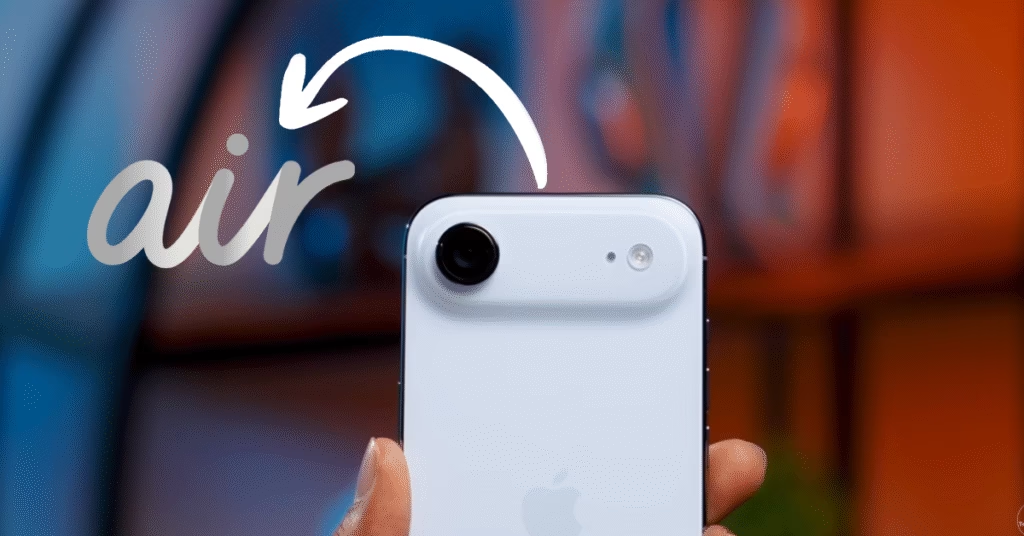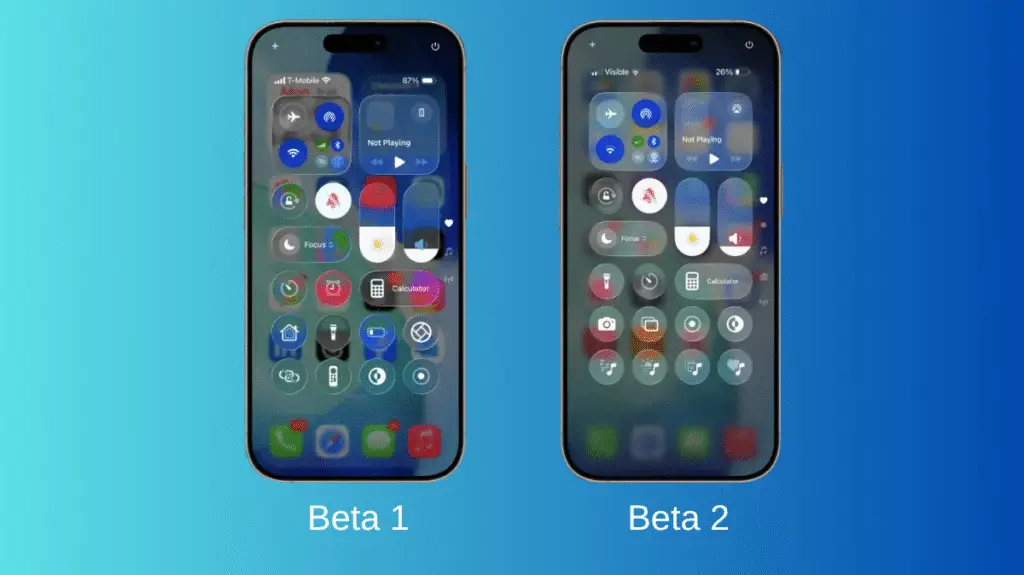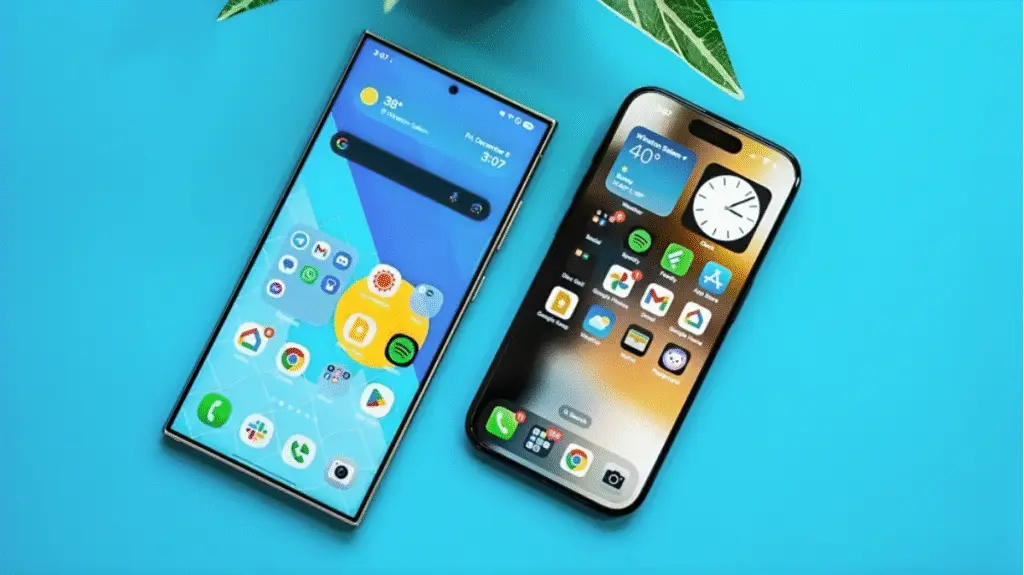
When Apple introduces a new product with the word “Air” attached to it, you know it’s about redefining design. The Apple iPhone Air, launched on September 9, 2025, is exactly that bold statement in how far a smartphone can be pushed toward thinness without compromising the essence of an iPhone. Apple isn’t calling it a Pro or Max. Instead, it’s making a new category for those who crave lightness, sleekness, and futuristic engineering above everything else.
A Radical New Design
At just 5.64mm thick, the iPhone Air is thinner than a No. 2 pencil, the iPod Touch, and even the famously bendable iPhone 6. But unlike the 2014 model, this device doesn’t flex under pressure. Apple has used a titanium frame along with Ceramic Shield 2 glass, giving it durability that feels almost impossible considering how slim it is. Early durability tests show it aces bend resistance and even maintains an IP68 rating against water and dust.
Apple reimagined the internal layout to achieve this profile. The top portion of the phone houses most of the logic board and computing parts, sitting under a small camera bump. The lower portion is largely battery, which is the biggest limiting factor in such a compact body. It’s a compromise Apple openly acknowledges, but the payoff is a phone that feels featherlight in the hand and slips effortlessly into any pocket.
Specifications
| Launch | |
|---|---|
| Release Date | September 9, 2025 |
| Price | Starting at $999 (256GB) |
| Body | |
|---|---|
| Dimensions | 5.64 mm (thinnest iPhone ever) |
| Weight | Ultra-light with titanium frame |
| Build | Titanium frame, Ceramic Shield 2 front/back, IP68 water/dust resistance |
| Display | |
|---|---|
| Type | Super Retina XDR OLED, ProMotion 120Hz |
| Size | 6.5 inches |
| Resolution | ~2790 × 1290 pixels |
| Peak Brightness | 3000 nits (HDR), 2000 nits (outdoor) |
| Platform | |
|---|---|
| OS | iOS 19 with Apple Intelligence features |
| Chipset | A19 Pro + N1 networking chip |
| Modem | C1X modem (Sub-6GHz 5G, no mmWave) |
| Memory | |
|---|---|
| Internal | 256GB / 512GB / 1TB |
| RAM | 8GB (LPDDR5) |
| Main Camera | |
|---|---|
| Main | 48MP Fusion wide camera with 2x crop |
| Ultra-wide | Not available |
| Telephoto | Not available |
| Video | 4K@60fps, Dolby Vision HDR, Spatial Audio |
| Selfie Camera | |
|---|---|
| Single | 18MP with Center Stage |
| Video | 4K@60fps, Cinematic Mode |
| Battery | |
|---|---|
| Capacity | Comparable to iPhone 11 (smaller cell) |
| Endurance | 4–5 hours screen-on time (average use) |
| Charging | MagSafe supported, slower than Pro models |
| Other Features | |
|---|---|
| Speakers | Single top earpiece speaker |
| SIM | eSIM only (no physical SIM slot) |
| Port | USB-C (USB 2.0 speeds) |
| Durability | Titanium body, Ceramic Shield 2, IP68 rating |
Disclaimer: We can not guarantee that the information on this page is 100% correct.
The Display Experience
Despite being ultra-thin, Apple didn’t cut corners with the screen. The iPhone Air sports a 6.5-inch Super Retina XDR OLED panel with 120Hz ProMotion. Outdoors, the brightness pushes an impressive 3000 nits, while HDR content reaches 1600 nits.
The panel also supports Always-On Display and Dynamic Island, making it consistent with Apple’s modern lineup. Scrolling feels buttery smooth, colors pop, and HDR movies look spectacular. This is one area where Apple didn’t compromise.
Performance Under the Hood
Driving the device is Apple’s A19 Pro chip, paired with the latest N1 networking system that supports Wi-Fi 7, Bluetooth 6, and Thread for future smart home integration. A new C1X modem delivers faster and more efficient connectivity, doubling speeds compared to previous generations.
But there are trade-offs. The iPhone Air does not include a vapor chamber for cooling like the Pro models, which means during heavy tasks such as gaming or video editing, it can heat up and throttle performance. For everyday social apps, messaging, web browsing, and light productivity it flies. But power users will notice limits when pushing the hardware.
Cameras: One Great Sensor, but Just One
Apple’s design choices meant scaling back the camera system. The rear houses a 48MP Fusion main sensor, which captures crisp, vibrant photos and supports a 2x digital crop for added versatility. On the front, an 18MP selfie camera with Center Stage makes video calls sharp and dynamic.
The phone records Dolby Vision 4K60 video, and Apple has included Spatial Audio with wind reduction for better sound recording. However, missing from the setup are an ultra-wide and telephoto lens. For casual shooters, the single camera is more than capable. For enthusiasts, it feels limiting compared to what the Pro models offer.
Audio and Connectivity
Perhaps the biggest compromise is in sound. To save space, Apple removed the bottom speaker, leaving only the earpiece as the sole audio output. This results in tinny sound with weaker bass, and when holding the phone horizontally, you get a near mono experience. It’s fine for calls or casual use, but music lovers won’t be impressed.
On the connectivity side, the device embraces the eSIM-only approach worldwide, eliminating the SIM tray. While this adds a bit of extra battery room (around 200 mAh gain), it can be inconvenient for frequent travelers who rely on swapping SIM cards. The USB-C port is also limited to USB 2.0 speeds, unlike the Pro models which support faster transfer rates.
Another notable omission is mmWave 5G support. The Air is restricted to sub-6GHz bands. While this doesn’t affect most users, those in regions with heavy mmWave deployment will miss out on the ultra-fast peaks.
Battery Life
This is where thinness shows its cost. The iPhone Air carries a much smaller battery compared to the iPhone 17 Pro. In real-world testing, it delivers 4–5 hours of screen-on time, often dipping into Low Power Mode by evening.
Charging speeds are also slower compared to Apple’s premium lineup. Even with MagSafe, topping up isn’t as quick as you’d expect in 2025. The optional MagSafe Battery Pack provides only about 65% recharge, reinforcing that this phone isn’t designed for power users who demand endurance.
Apple’s Design Philosophy
The Air line has always been about pushing boundaries of size and weight. Just as the original MacBook Air redefined the laptop category, the iPhone Air shows what a smartphone can look like when thinness becomes the top priority. It’s a design-first device, appealing to those who want something unique and futuristic, even if it means giving up some power features.
Interestingly, many analysts believe the iPhone Air is also a test platform. Its extreme thinness hints at how Apple might design its future foldable iPhone, where each half must be thin enough to fold without creating a brick in your pocket. In that sense, the Air could be laying the groundwork for Apple’s next big leap.
Who Should Buy It?
The iPhone Air isn’t for everyone. If you value all-day battery life, professional-grade cameras, or the loudest speakers, this isn’t the phone for you. The iPhone 17 Pro and Pro Max remain the true flagships for demanding users.
But if you prioritize design, portability, and the futuristic feel of holding the thinnest iPhone ever created, the Air is unmatched. It’s a conversation starter, a status symbol, and a sign of where Apple wants to take mobile design.
Final Thoughts
The Apple iPhone Air is an engineering marvel, balancing between innovation and sacrifice. It proves Apple is willing to take risks to redefine the smartphone category. Not everyone will love its compromises, but those who do will be carrying a piece of the future in their pocket.
For now, the iPhone Air is less about being the “best iPhone” and more about being the most daring iPhone. And in typical Apple fashion, that boldness will likely set trends across the industry.
See Also iPhone Air’s Biggest Innovation Lies in Its Battery
FAQs
When was the Apple iPhone Air launched?
The iPhone Air was officially launched on September 9, 2025.
How thin is the iPhone Air?
It measures just 5.64mm, making it the thinnest iPhone Apple has ever released.
What processor does the iPhone Air use?
It runs on Apple’s A19 Pro chip, paired with the new N1 networking system and C1X modem.
Does the iPhone Air have multiple rear cameras?
No, it features only a single 48MP Fusion main camera, unlike the Pro models which offer multiple lenses.
How is the battery life on iPhone Air?
Battery life is modest, offering around 4–5 hours of screen-on time, which may not be enough for heavy users.
Does the iPhone Air support eSIM?
Yes, it is eSIM-only worldwide, meaning there is no physical SIM card slot.
What is the price of the iPhone Air?
The base model starts at $999 for 256GB of storage.



